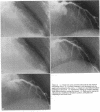Abstract
The monorail technique allows monitoring of all steps of the coronary angioplasty procedure by high quality coronary angiography; easy, rapid, and safe recrossing and redilatation of the lesion if necessary; and stepwise dilatation of a stenosis with sequential increase of size of balloons. Transstenotic pressure differences cannot, however, be measured through the narrow shaft of the standard monorail balloon catheter. The monorail technique was used in 1014 patients (820 men, 194 women; mean age 57.8 years (range 24 to 84]. The indication for coronary angioplasty was stable angina in 52%, unstable angina in 40%, and acute myocardial infarction in 8%. Single vessel coronary angioplasty was attempted in 78%, multilesion coronary angioplasty in 11%, and multivessel coronary angioplasty in 11%. Angiographic success (reduction of stenosis to less than 50% of the luminal diameter) of all attempted lesions was achieved in 93%. The technique was clinically successful--that is, angiographic success of all attempted lesions, no occurrence of a major complication (death, myocardial infarction, acute bypass surgery), and improvement of symptoms--in 92% and partially successful in 1.3%. The clinical success rates were similar for stable angina (91%) and unstable angina (94%), but were somewhat lower for acute myocardial infarction (88%). Failure without major complication occurred in 3.4% of the patients. Failure with a major complication occurred in 3.3% (death 0.3%, myocardial infarction 2.4%, and acute bypass surgery 2.3%). The total major complication rate was higher in unstable angina (4.2%) than in stable angina (3.0%). These results indicate that the monorail technique can be applied safely and effectively for coronary angioplasty of patients with stable angina, unstable angina, and acute myocardial infarction.
Full text
PDF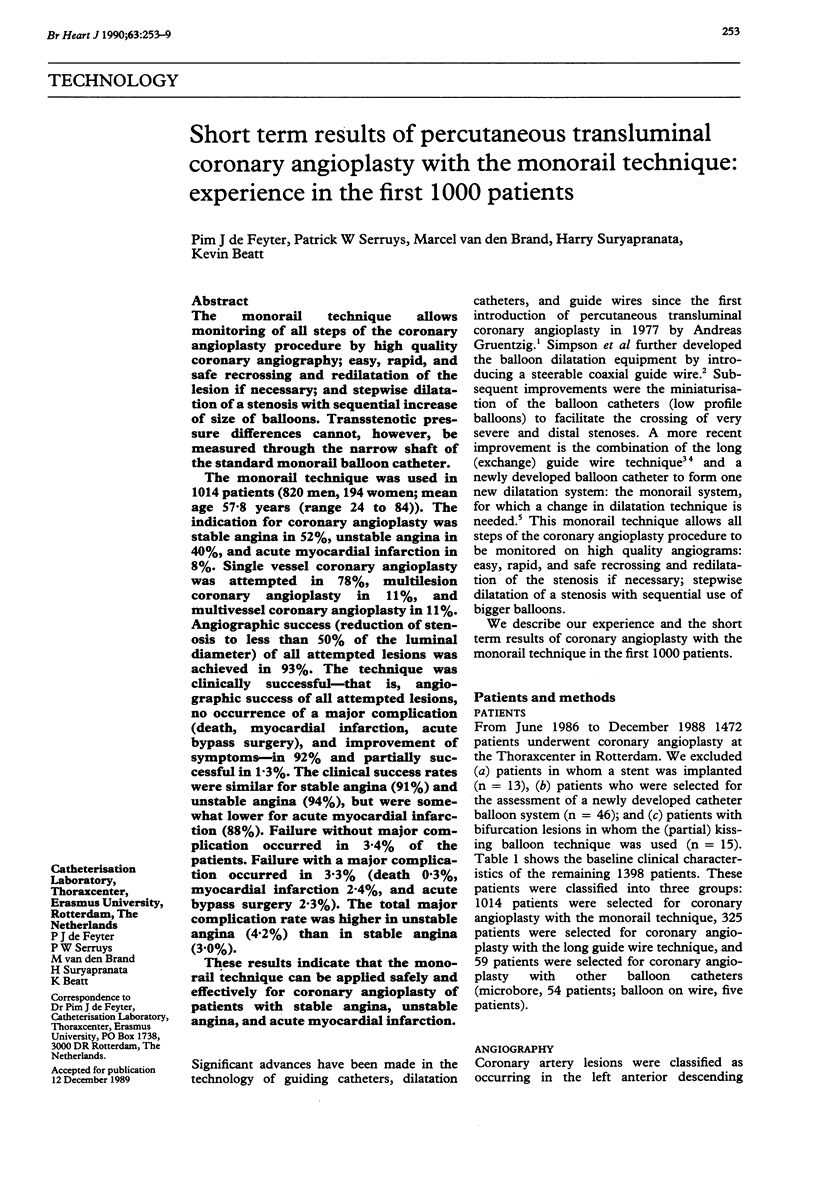
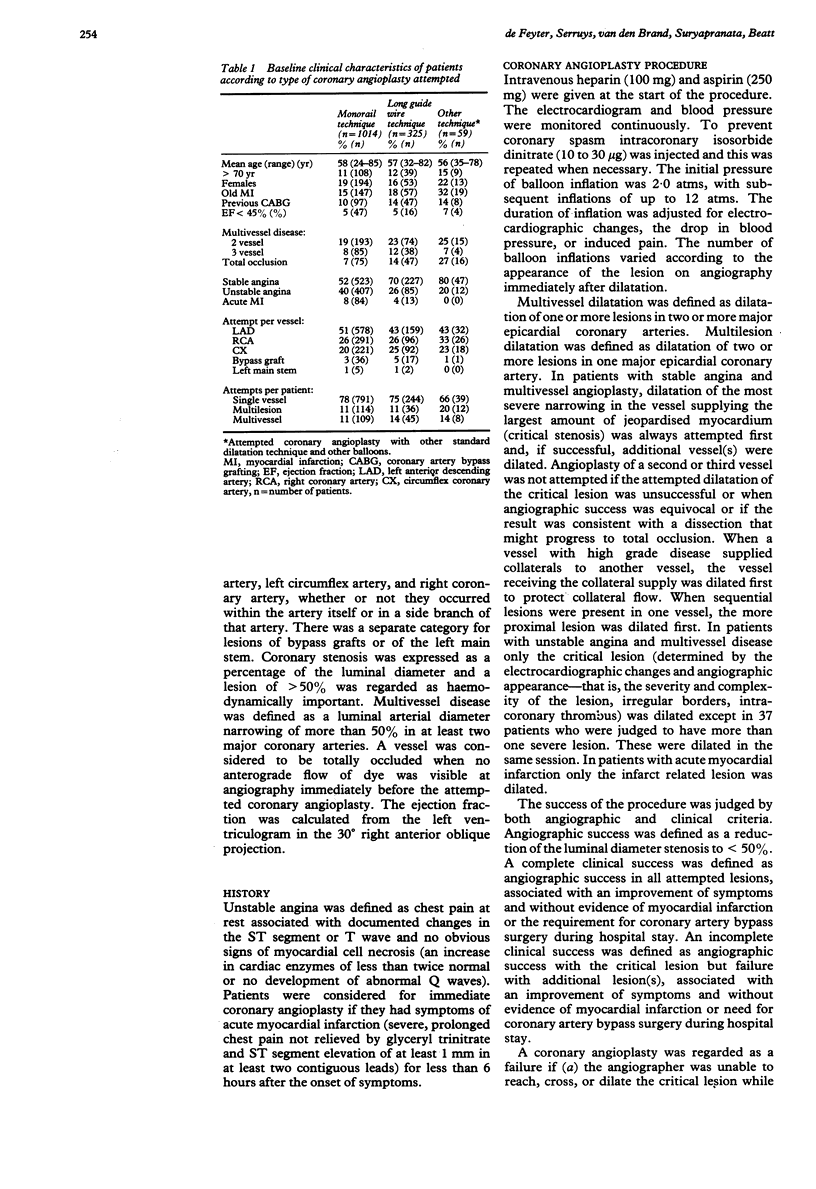
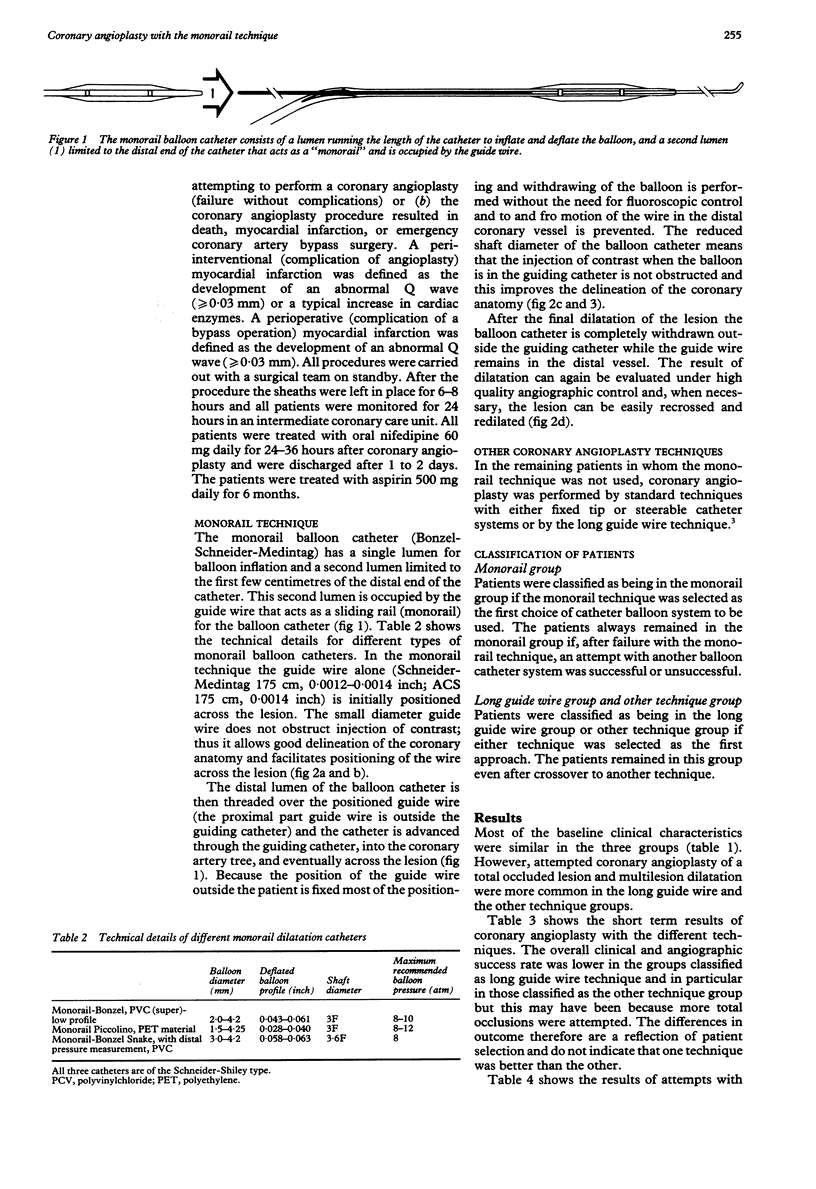
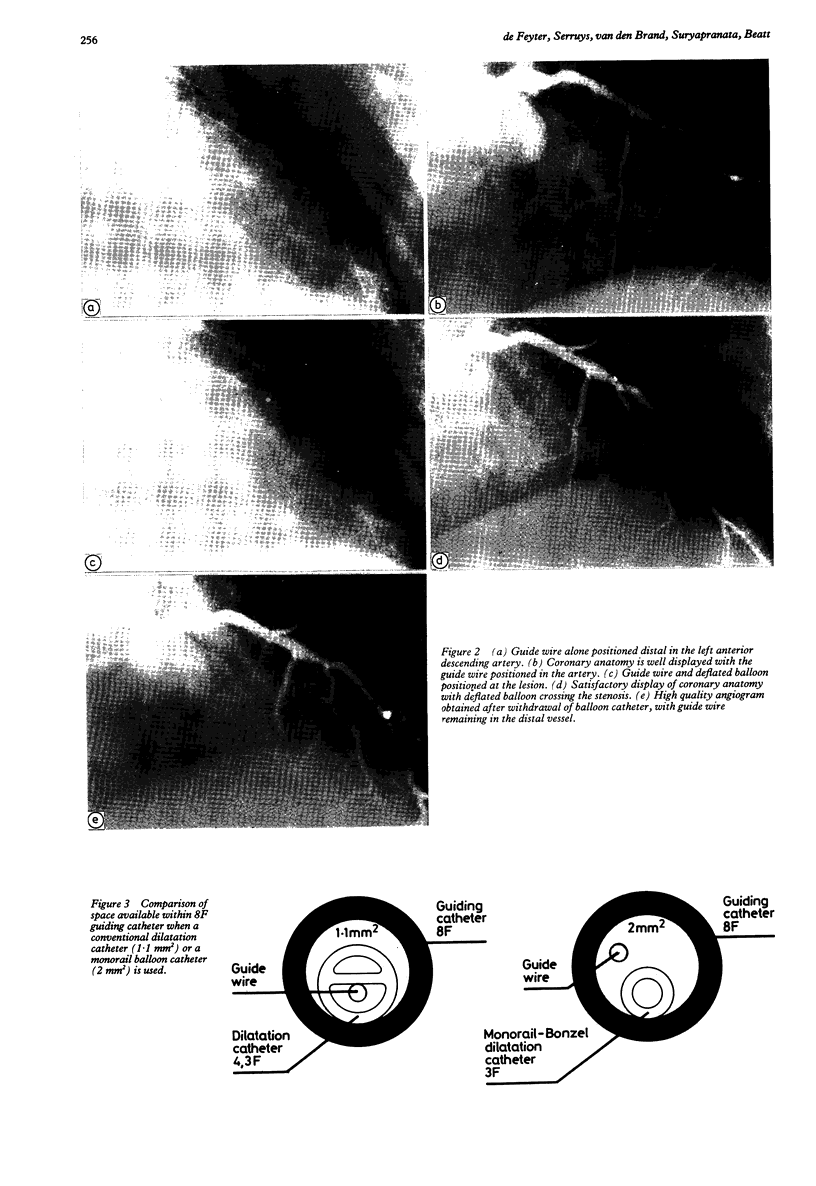
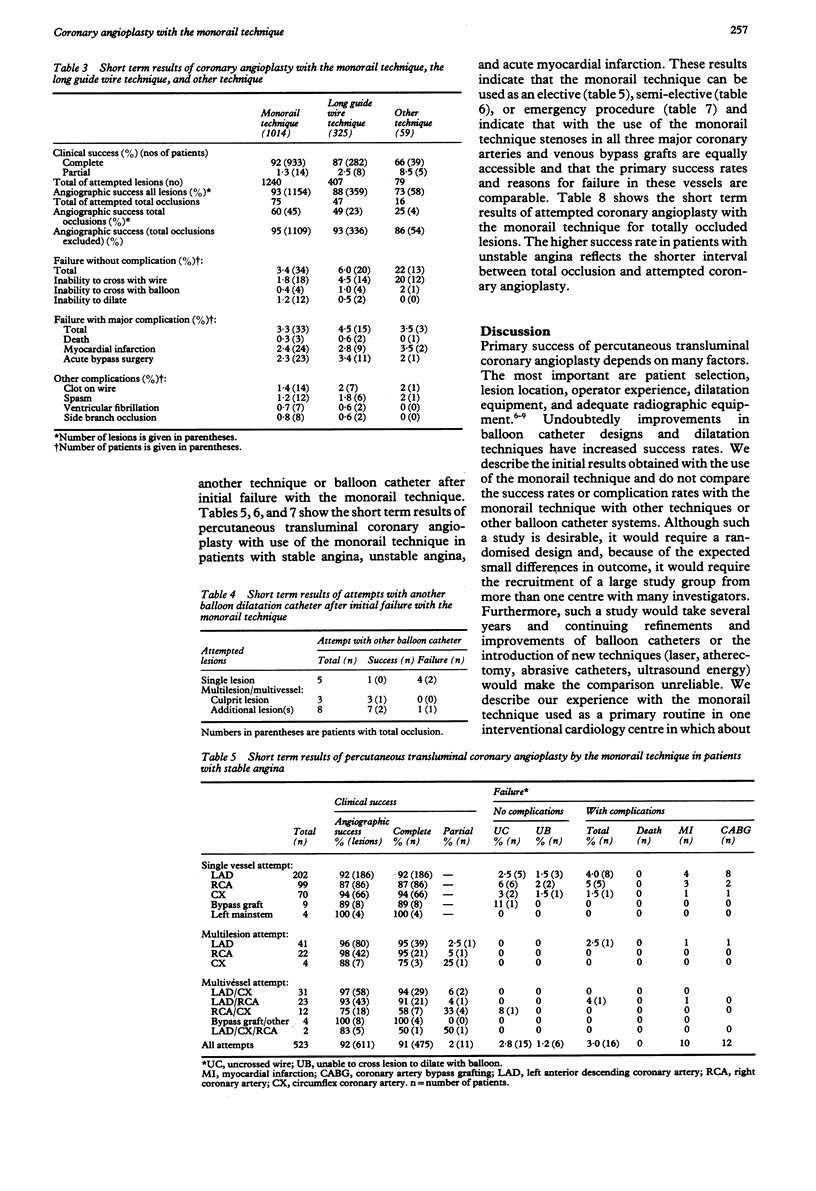
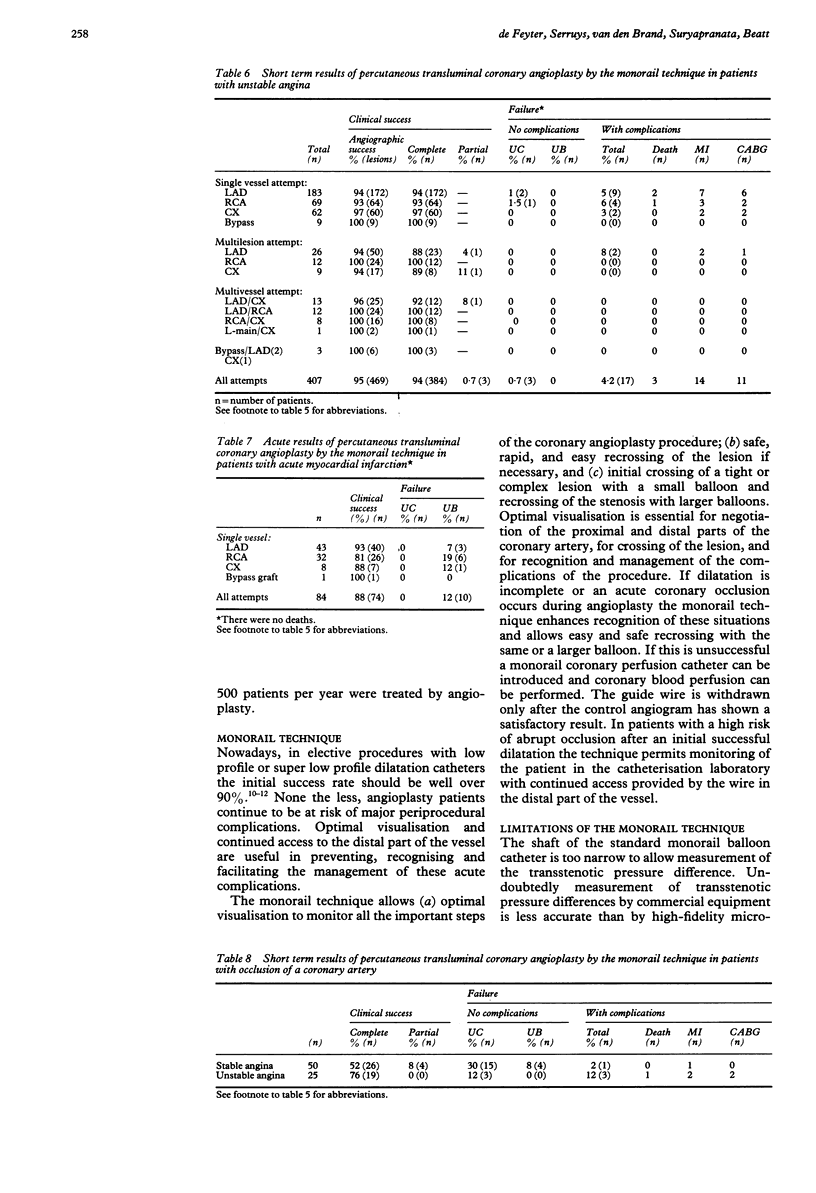
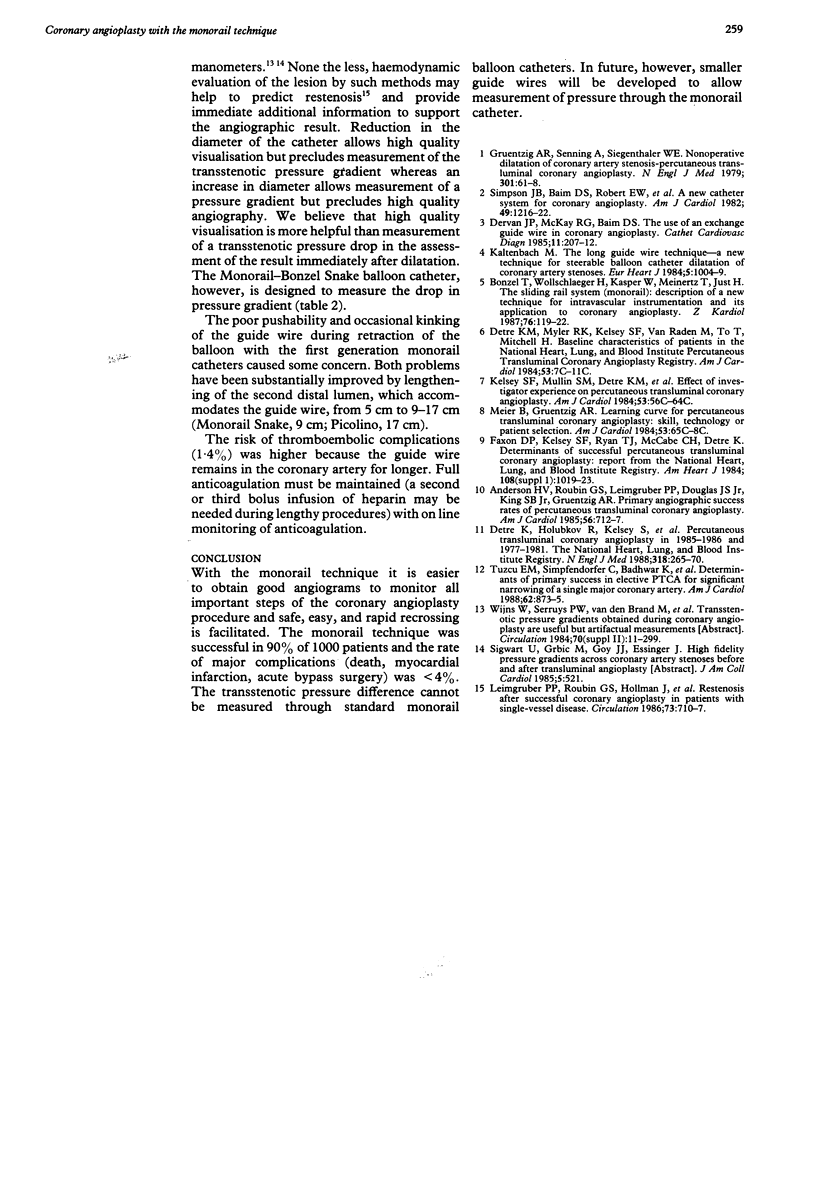
Images in this article
Selected References
These references are in PubMed. This may not be the complete list of references from this article.
- Anderson H. V., Roubin G. S., Leimgruber P. P., Douglas J. S., Jr, King S. B., Jr, Gruentzig A. R. Primary angiographic success rates of percutaneous transluminal coronary angioplasty. Am J Cardiol. 1985 Nov 1;56(12):712–717. doi: 10.1016/0002-9149(85)91121-x. [DOI] [PubMed] [Google Scholar]
- Dervan J. P., McKay R. G., Baim D. S. The use of an exchange guide wire in coronary angioplasty. Cathet Cardiovasc Diagn. 1985;11(2):207–212. doi: 10.1002/ccd.1810110213. [DOI] [PubMed] [Google Scholar]
- Detre K., Holubkov R., Kelsey S., Cowley M., Kent K., Williams D., Myler R., Faxon D., Holmes D., Jr, Bourassa M. Percutaneous transluminal coronary angioplasty in 1985-1986 and 1977-1981. The National Heart, Lung, and Blood Institute Registry. N Engl J Med. 1988 Feb 4;318(5):265–270. doi: 10.1056/NEJM198802043180501. [DOI] [PubMed] [Google Scholar]
- Faxon D. P., Kelsey S. F., Ryan T. J., McCabe C. H., Detre K. Determinants of successful percutaneous transluminal coronary angioplasty: report from the National Heart, Lung, and Blood Institute Registry. Am Heart J. 1984 Oct;108(4 Pt 1):1019–1023. doi: 10.1016/0002-8703(84)90470-8. [DOI] [PubMed] [Google Scholar]
- Grüntzig A. R., Senning A., Siegenthaler W. E. Nonoperative dilatation of coronary-artery stenosis: percutaneous transluminal coronary angioplasty. N Engl J Med. 1979 Jul 12;301(2):61–68. doi: 10.1056/NEJM197907123010201. [DOI] [PubMed] [Google Scholar]
- Kaltenbach M. The long wire technique--a new technique for steerable balloon catheter dilatation of coronary artery stenoses. Eur Heart J. 1984 Dec;5(12):1004–1009. doi: 10.1093/oxfordjournals.eurheartj.a061601. [DOI] [PubMed] [Google Scholar]
- Leimgruber P. P., Roubin G. S., Hollman J., Cotsonis G. A., Meier B., Douglas J. S., King S. B., Jr, Gruentzig A. R. Restenosis after successful coronary angioplasty in patients with single-vessel disease. Circulation. 1986 Apr;73(4):710–717. doi: 10.1161/01.cir.73.4.710. [DOI] [PubMed] [Google Scholar]
- Simpson J. B., Baim D. S., Robert E. W., Harrison D. C. A new catheter system for coronary angioplasty. Am J Cardiol. 1982 Apr 1;49(5):1216–1222. doi: 10.1016/0002-9149(82)90047-9. [DOI] [PubMed] [Google Scholar]
- Tuzcu E. M., Simpfendorfer C., Badhwar K., Chambers J., Dorosti K., Franco I., Hollman J., Whitlow P. Determinants of primary success in elective percutaneous transluminal coronary angioplasty for significant narrowing of a single major coronary artery. Am J Cardiol. 1988 Nov 1;62(13):873–875. doi: 10.1016/0002-9149(88)90884-3. [DOI] [PubMed] [Google Scholar]



